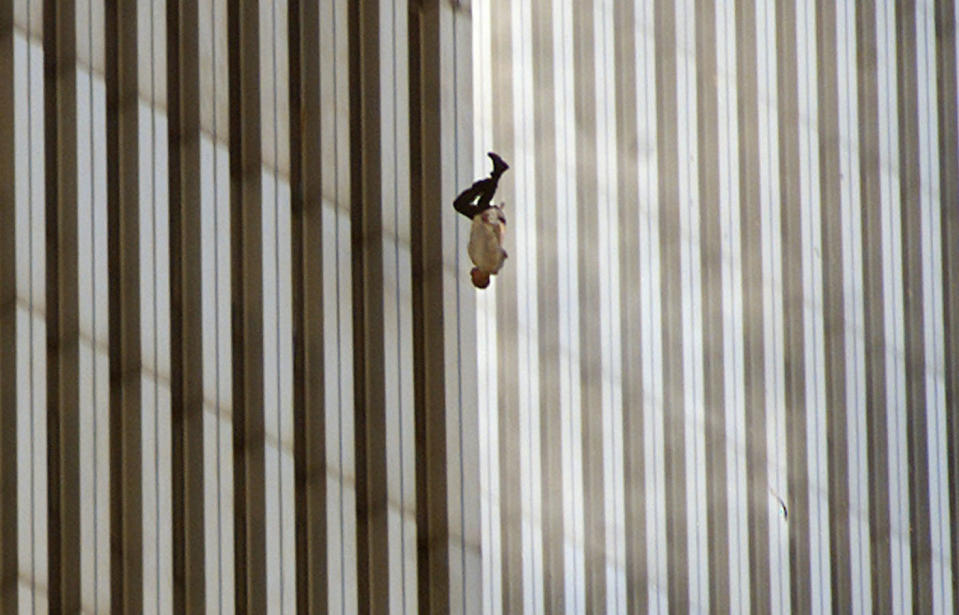The story behind this unforgettable photo from the aftermath of the September 11 attacks
Eighteen years ago, veteran photographer Richard Drew watched dozens leap to their death from New York’s World Trade Center, through the lens of a Nikon DCS620.
On the morning of September 11, 2001, two planes had crashed into the Twin Towers by the time Drew arrived on the scene.
Nearly 3,000 people were killed when hijacked planes rammed into the World Trade Centre, the Pentagon and a field near Shanksville in 2001.

The 110-storey Twin Towers looked like a pair of giant smokestacks spewing plumes of black soot into the crystal blue sky.
Hundreds jumped from Twin Towers rather than be burned alive
The Associated Press photo-journalist began shooting, focusing on the topmost floors.
It wasn't long before he realised some of the people trapped inside - as many as 200 of them, it was later estimated - had decided plunging hundreds of metres to their deaths was preferable to burning alive.
"I just started photographing people as they were falling," he told Yahoo News in a 2011 interview marking the tenth anniversary of the terror attack.

Controversy around iconic 9/11 ‘Falling Man’ photo
One of those people would come to be known as ‘The Falling Man’. He fell at 9:41am, and Drew caught about a dozen frames of his fatal descent. In one of them, the subject soars earthward in a graceful vertical dive - arms at his sides; left leg bent at the knee.
Newspapers the world over made space for the Falling Man in their September 12, editions. But the widespread publicity sparked a debate as to whether the image was too gratuitous for public consumption.
In most US newspapers, the iconic photograph of the Falling Man ran just once, and never again.

Publications across the country were forced to defend themselves against accusations that they exploited the man's death and removed his dignity.
“To me, it's a real quiet photograph," Drew argued.
Photographer defends picture from September 11 terror attack
Unlike fellow AP photographer Nick Ut's Pulitzer-winning 1972 shot of a naked nine-year-old girl fleeing a napalm attack in Vietnam, or Drew's famous photos of Robert F. Kennedy's bloody dying breaths: "There's no violence in it," he said.
As for the anonymous soul whose legacy Drew has unwittingly preserved.
"Even if people don't want to see my photograph, that man did fall out of the building," he said.
"To me, he'll always remain the unknown soldier."
Drew is perhaps best known for his Falling Man photo, but he also captured many other powerful images of the catastrophic events in New York on September 11, 2001.
Do you have a story tip? Email: newsroomau@yahoonews.com.
You can also follow us on Facebook, download the Yahoo News app from the App Store or Google Play and stay up to date with the latest news with Yahoo’s daily newsletter. Sign up here.

